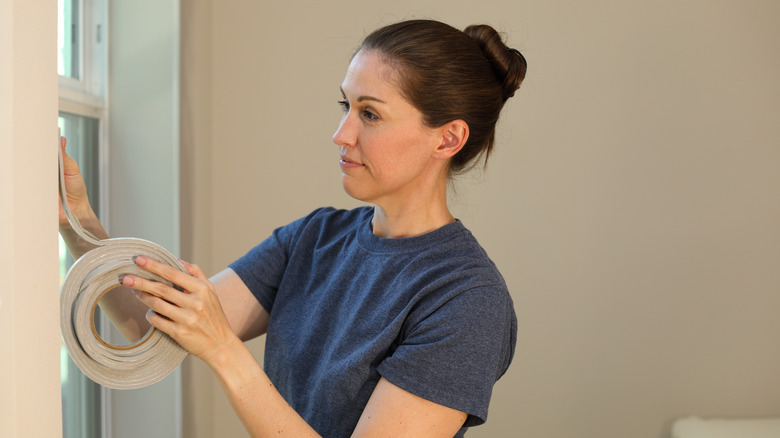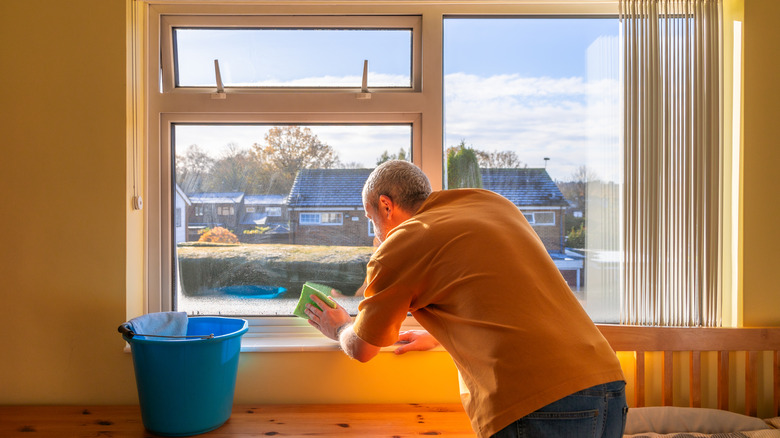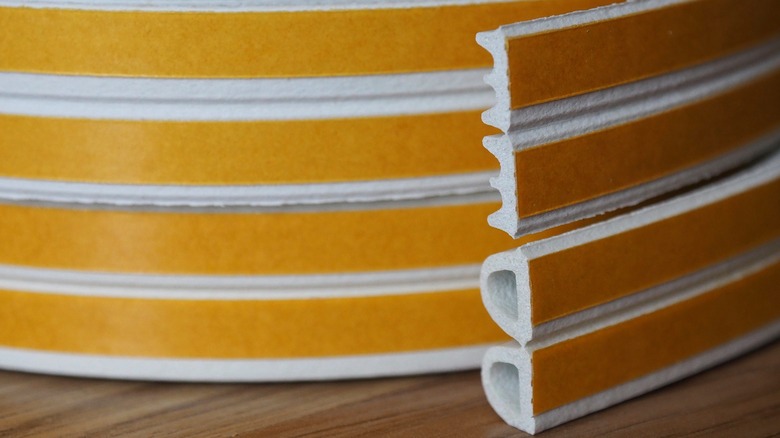How To Clean The Weather Stripping & Seals On Windows To Stay Warm (And Lower Heat Bills)
Keeping your home in tip top shape so it performs at its best year in and year out is an important aspect of maintaining comfort and convenience for you and your family. What you do now to keep your home's functionality up to par will pay off for you literally and figuratively. Maintenance activities like getting your HVAC system checked annually and cleaning out the lint trap in your dryer will keep your expensive appliances running while also making your home safer, more comfortable, and cost-efficient. You should also be checking and cleaning your window seals and weather stripping as part of your regular maintenance.
Weather stripping serves as a protective barrier against drafts, moisture, dust, and noise, which stabilizes overall indoor temperature and energy efficiency. It comes in a variety of materials to protect specific areas of your home, including metal for perimeters, tape for window frames, and closed-cell foam for window stops. Since there are a variety of materials available, there isn't a one-size-fits-all approach to cleaning, so know what materials you have where, to optimize your time and efforts.
The best way to clean the weather stripping and seals around your windows
Begin by wiping away surface debris from rubber or vinyl stripping using a soft cloth or toothbrush and a mild solution of dish soap and water. For mildew or mold buildup, avoid bleach on rubber surfaces. Instead, spread a 50/50 mix of distilled water and white vinegar, let it sit for 10 to 15 minutes, then scrub gently and wipe clean. Rinse with clean water and dry thoroughly. Inspect the stripping for brittleness, tears, or loss of elasticity; if damaged, replace to maintain an effective seal.
For seals and channels, start by vacuuming or brushing dust and dirt away to prevent abrasions. Mix warm water and mild soap, then use a soft cloth or sponge to wipe the seals, being sure to get into the crevices. Just like with weather stripping, if you have mold or mildew from condensation buildup on your window, use your vinegar solution in the same manner. After cleaning, rinse with water and dry with a clean cloth before testing window sashes to make sure they still move freely and seal when closed.
The importance of maintenance
Weather stripping is essential for sealing gaps around windows, blocking drafts, and preventing energy loss. Proper stripping makes your home feel warmer and can significantly reduce heating and cooling expenses. Sealing around operable windows helps prevent air leaks and improves energy efficiency without impeding the operation of moving parts. By selecting durable materials suited to temperature, friction, and wear, you can maintain indoor comfort and lower utility costs.
Window seals, often implemented via weatherstripping between sash and frame, play a critical role in reducing drafts from your windows and preserving indoor temperature control. Weatherstripping around windows is a key method to seal air leaks around your home's movable components. Closing gaps between sashes and frames with appropriate sealing materials such as V-strips, tubular gaskets, or pile weatherstripping, helps maintain a tight thermal boundary and enhances overall comfort. When window seals function correctly, they reduce energy consumption and waste, limit moisture infiltration, and contribute to a more durable and efficient home for you and your family.


